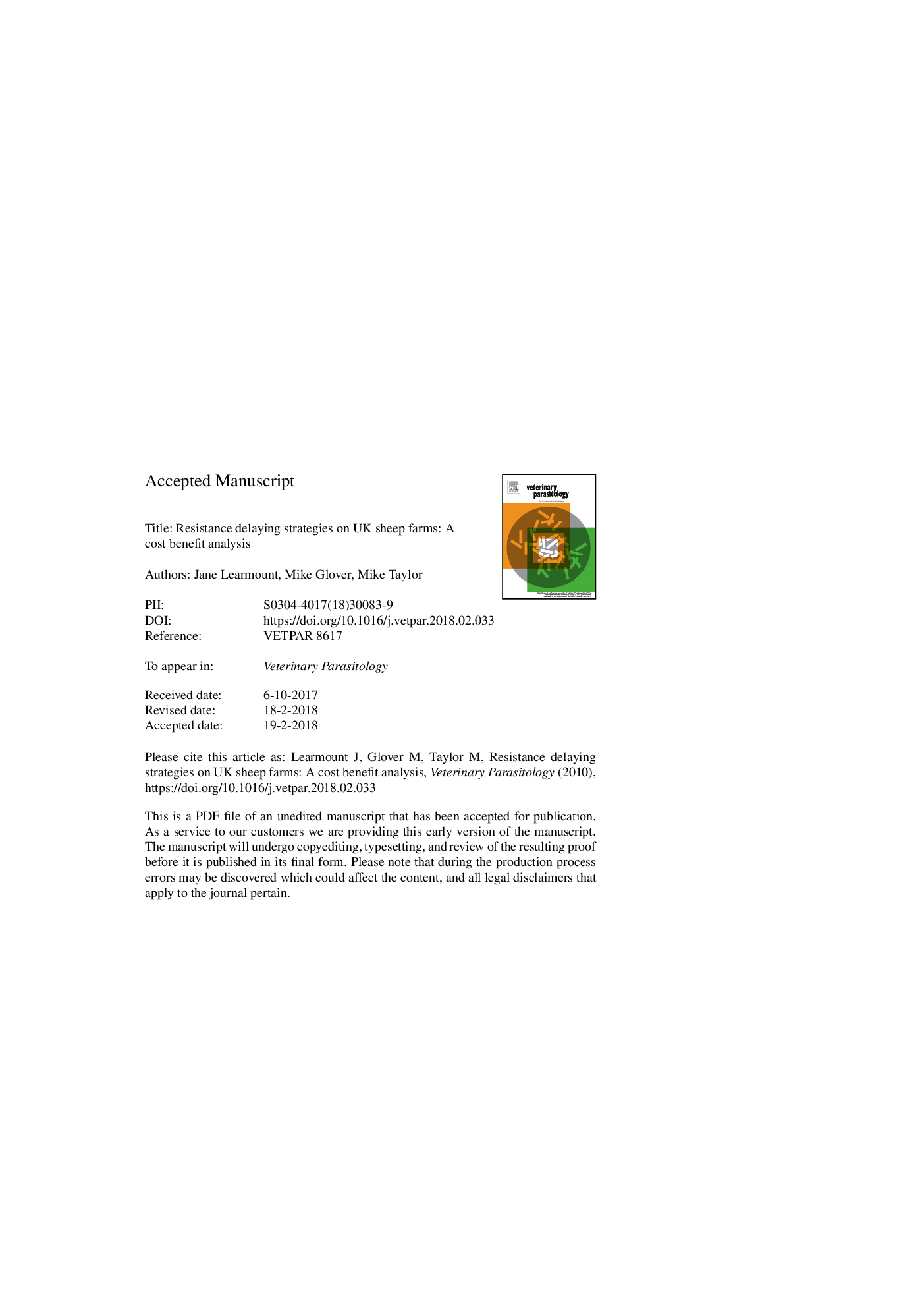| کد مقاله | کد نشریه | سال انتشار | مقاله انگلیسی | نسخه تمام متن |
|---|---|---|---|---|
| 8506024 | 1555622 | 2018 | 34 صفحه PDF | دانلود رایگان |
عنوان انگلیسی مقاله ISI
Resistance delaying strategies on UK sheep farms: A cost benefit analysis
ترجمه فارسی عنوان
استراتژی تاخیر در مقاومت در مزارع گوسفند بریتانیا: تجزیه و تحلیل سود هزینه
دانلود مقاله + سفارش ترجمه
دانلود مقاله ISI انگلیسی
رایگان برای ایرانیان
کلمات کلیدی
موضوعات مرتبط
علوم زیستی و بیوفناوری
علوم کشاورزی و بیولوژیک
علوم دامی و جانورشناسی
چکیده انگلیسی
UK guidelines for the sustainable control of parasites in sheep (SCOPS) were formulated with the primary aim of delaying development of anthelmintic resistance (AR) on UK sheep farms. Promoting their use requires the engagement and commitment of stakeholders. An important driver for behavioural change in sheep farmers is evidence of economic benefits. A recent evaluation of SCOPS guidance in practice demonstrated a significant reduction in anthelmintic use, suggesting economic benefits through a direct reduction in product and labour costs. However, in order to maintain production, a range of alternative control strategies are advised, resulting in additional costs to farmers and so a full cost benefit analysis of best practice management was undertaken. We allocated financial values to the management recommendations described in the SCOPS technical manual. Benefits were calculated using data for production variables and anthelmintic use measured during studies to evaluate the effect of SCOPS recommendations on 16 UK sheep farms and from other published work. As SCOPS control is not prescriptive and a range of different diagnostics are available, best and worst case scenarios were presented, comparing the cheapest methods (e.g. egg counts without larval culture) and management situations (e.g closed flocks not requiring quarantine treatments) with the most laborious and expensive. Simulations were run for farms with a small, medium or large flock (300; 1000; 1900 ewes) as well as comparing scenarios with and without potential production benefits from using effective wormers. Analysis demonstrated a moderate cost for all farms under both scenarios when production benefits were not included. A cost benefit was demonstrated for medium and large farms when production benefits were included and the benefit could be perceived as significant in the case of the large farms for the best case scenario (>£5000 per annum). Despite a significant potential reduction in anthelmintic use by farmers employing SCOPS guidance, the very low price of the older anthelmintic classes meant that the benefit did not always outweigh the additional management/diagnostic costs unless an increase in production was also achieved. This is an important finding. Focussing research on key innovations that will improve the cost effectiveness of diagnostic assays in a diagnostic driven control strategy, as well as designing treatment options that can improve production outcomes, and presenting them in a clear and transparent way, must be high priority goals. Coupling targeted research with improvements in the delivery of messages to the end user is important in the light of increasing global concerns over drug resistance.
ناشر
Database: Elsevier - ScienceDirect (ساینس دایرکت)
Journal: Veterinary Parasitology - Volume 254, 30 April 2018, Pages 64-71
Journal: Veterinary Parasitology - Volume 254, 30 April 2018, Pages 64-71
نویسندگان
Jane Learmount, Mike J. Glover, Mike A. Taylor,
